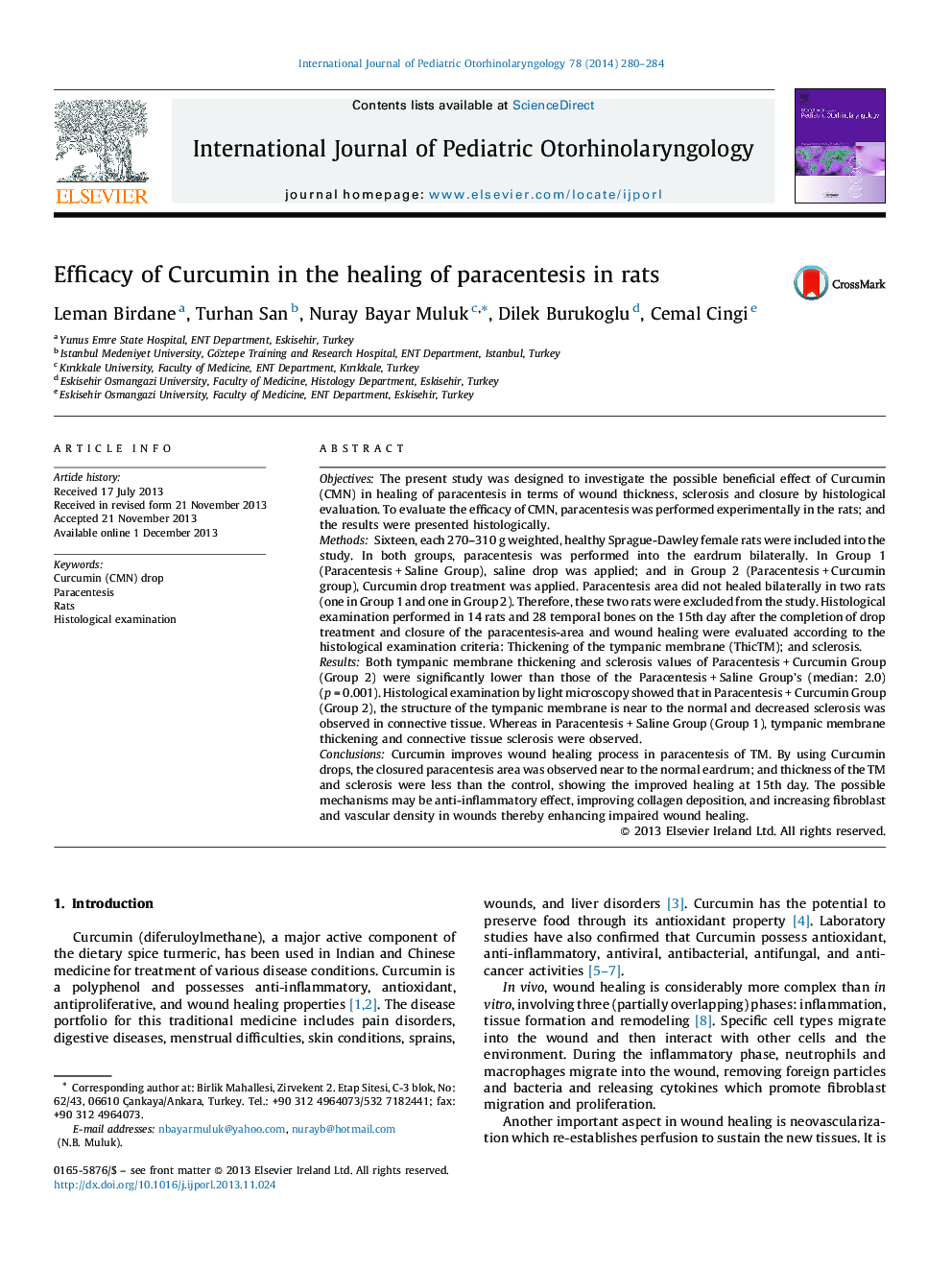| Article ID | Journal | Published Year | Pages | File Type |
|---|---|---|---|---|
| 6213828 | International Journal of Pediatric Otorhinolaryngology | 2014 | 5 Pages |
ObjectivesThe present study was designed to investigate the possible beneficial effect of Curcumin (CMN) in healing of paracentesis in terms of wound thickness, sclerosis and closure by histological evaluation. To evaluate the efficacy of CMN, paracentesis was performed experimentally in the rats; and the results were presented histologically.MethodsSixteen, each 270-310 g weighted, healthy Sprague-Dawley female rats were included into the study. In both groups, paracentesis was performed into the eardrum bilaterally. In Group 1 (Paracentesis + Saline Group), saline drop was applied; and in Group 2 (Paracentesis + Curcumin group), Curcumin drop treatment was applied. Paracentesis area did not healed bilaterally in two rats (one in Group 1 and one in Group 2). Therefore, these two rats were excluded from the study. Histological examination performed in 14 rats and 28 temporal bones on the 15th day after the completion of drop treatment and closure of the paracentesis-area and wound healing were evaluated according to the histological examination criteria: Thickening of the tympanic membrane (ThicTM); and sclerosis.ResultsBoth tympanic membrane thickening and sclerosis values of Paracentesis + Curcumin Group (Group 2) were significantly lower than those of the Paracentesis + Saline Group's (median: 2.0) (p = 0.001). Histological examination by light microscopy showed that in Paracentesis + Curcumin Group (Group 2), the structure of the tympanic membrane is near to the normal and decreased sclerosis was observed in connective tissue. Whereas in Paracentesis + Saline Group (Group 1), tympanic membrane thickening and connective tissue sclerosis were observed.ConclusionsCurcumin improves wound healing process in paracentesis of TM. By using Curcumin drops, the closured paracentesis area was observed near to the normal eardrum; and thickness of the TM and sclerosis were less than the control, showing the improved healing at 15th day. The possible mechanisms may be anti-inflammatory effect, improving collagen deposition, and increasing fibroblast and vascular density in wounds thereby enhancing impaired wound healing.
